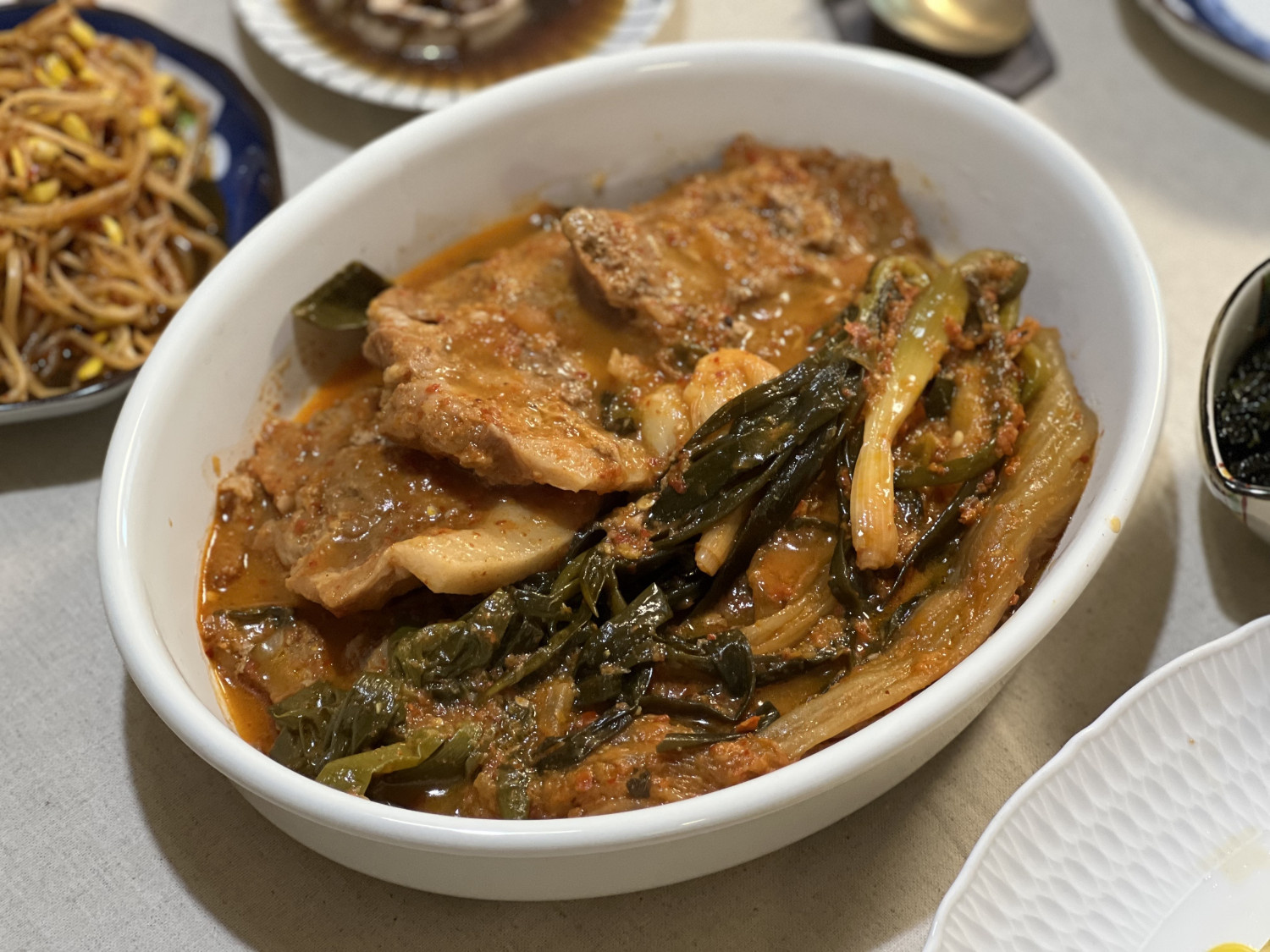Spicy and Rich Pork and Kimchi Stew
Pork and Kimchi Stew: A Hearty Main Dish Perfect for Entertaining Guests

With well-fermented aged kimchi, you can whip up a satisfying meal in no time! This aged kimchi and pork stew, a favorite of my husband’s, is also a perfect accompaniment to soju! The tender kimchi and juicy pork create an unforgettable flavor.
Kimchi Stew- 500g Pork (neck or belly)
- 1/2 head Aged Kimchi (well-fermented)
- Scallion Kimchi (optional, for enhanced flavor) – as needed
- 10 whole Garlic cloves
- 3 Green Onions
- 1 Onion
- Water or Broth (anchovy-kelp broth, rice water, etc.) – as needed
Pork Marinade- 2 Tbsp Mirin (or cooking wine)
- 2 Tbsp Sugar
- 1 Tbsp Plum Extract
- 1-2 Tbsp Gochugaru (Korean chili flakes, adjust to spice preference)
- 2 Tbsp Soy Sauce
- 1 Tbsp Minced Garlic
- 2 Tbsp Mirin (or cooking wine)
- 2 Tbsp Sugar
- 1 Tbsp Plum Extract
- 1-2 Tbsp Gochugaru (Korean chili flakes, adjust to spice preference)
- 2 Tbsp Soy Sauce
- 1 Tbsp Minced Garlic
Cooking Instructions
Step 1
First, in a bowl, combine the pork with all the marinade ingredients: mirin, sugar, plum extract, gochugaru, soy sauce, and minced garlic. Gently mix to coat the pork and let it marinate for about 10 minutes. This step tenderizes the meat and removes any unwanted odors, making it even more delicious. You can substitute pork neck with pork belly or shoulder if preferred. Adjust the amount of gochugaru based on your desired spice level.

Step 2
Now, we’ll layer all the ingredients in the pot. Start by placing the roughly chopped green onions and onion at the bottom of the pot. Next, add the marinated pork on top. Finally, layer a generous amount of the aged kimchi and scallion kimchi over the pork. Layering the ingredients this way allows the flavors to meld evenly, resulting in a richer taste.

Step 3
Finish by scattering the 10 whole garlic cloves evenly over the top. This completes the ingredient preparation! The whole garlic cloves will soften and sweeten as they cook, further enhancing the pork’s flavor.

Step 4
Pour enough water or broth into the pot to completely submerge the kimchi and other ingredients. Using anchovy-kelp broth or rice water will add an extra layer of savory flavor, making it even more delicious. I used some saved water from cooking rice with a piece of kelp as my broth.

Step 5
Bring the stew to a boil over high heat. Once it’s boiling vigorously, reduce the heat to medium-low, cover the pot, and let it simmer for at least 30 minutes. It’s crucial to cook it long enough for the kimchi to become tender.

Step 6
The stew is ready when the kimchi is so tender that it easily tears apart with chopsticks! Since the saltiness can vary depending on how well-fermented your kimchi is, taste it and add a little soy sauce or salt if needed. However, if you use delicious, well-aged kimchi, you might not need any extra seasoning at all.



